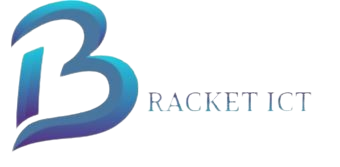
Django vs Laravel: A Complete Guide and Comparison 2023
Keep in mind that the information provided here is based on the state of these frameworks up to that point, and there may have been updates or changes since then. Always refer to the official documentation and community discussions for the latest information.
Django:
1. Introduction:
– Language: Python
– Primary Use Case: Web development (full-stack)
– Popular for: Rapid development, scalability, clean and pragmatic design.
2. Architecture:
– MVC/MVT: Model-View-Template (MVT) architecture.
– ORM: Django comes with its Object-Relational Mapping (ORM) system.
3. Key Features:
– Admin Interface: Django provides a built-in admin interface for content management.
– Batteries Included: Django follows the “batteries included” philosophy, providing many built-in features out of the box.
– DRF (Django Rest Framework): Excellent support for building RESTful APIs.
4. Community and Ecosystem:
– Community: Large and active community.
– Ecosystem: Django has a robust ecosystem with many third-party packages.
5. Scalability:
– Django is highly scalable and has been used in various large-scale projects.
6. Learning Curve:
– Generally considered easy for developers familiar with Python.
Laravel:
1. Introduction:
– Language: PHP
– Primary Use Case: Web development (full-stack)
– Popular for: Elegant syntax, developer-friendly features, modern PHP practices.
2. Architecture:
– MVC: Model-View-Controller architecture.
– ORM: Laravel uses Eloquent ORM.
3. Key Features:
– Artisan Console: Laravel provides a powerful command-line tool called Artisan.
– Blade Templating Engine: Laravel comes with the Blade templating engine.
– Eloquent ORM: Laravel’s Eloquent is an expressive and fluent ORM.
4. Community and Ecosystem:
– Community: Laravel has a growing and enthusiastic community.
– Ecosystem: Laravel has a rich ecosystem with packages available via Composer.
5.Scalability:
– Laravel is scalable and has been used in various large-scale projects.
6. Learning Curve:
– Laravel is known for its developer-friendly syntax, making it relatively easy to learn for PHP developers.
Comparison:
1. Syntax and Ease of Use:
– Django: Python developers find Django’s syntax intuitive, but there might be a learning curve for those new to Python.
– Laravel: Known for its elegant and expressive syntax, making it friendly for PHP developers.
2. ORM and Database:
– Django: Comes with its ORM system, providing an abstraction over the database.
– Laravel: Uses Eloquent ORM, known for its simplicity and flexibility.
3. Community and Ecosystem:
– Both frameworks have active communities and rich ecosystems, with plenty of third-party packages available.
4. Learning Curve:
– Django may have a steeper learning curve for beginners due to its Pythonic nature.
– Laravel is often praised for its developer-friendly design and ease of learning.
5. Use Cases:
– Both frameworks are suitable for building a variety of web applications, including content management systems, e-commerce platforms, and APIs.
6. Documentation:
– Both Django and Laravel have comprehensive documentation that helps developers get started and find solutions to common problems.
Conclusion:
The choice between Django and Laravel often depends on factors like language preference (Python vs. PHP), the specific needs of the project, and the familiarity of the development team with the chosen technology stack. Both frameworks are capable of building robust and scalable web applications, so it’s advisable to consider project requirements and team expertise when making a decision. Always refer to the latest documentation and community discussions for the most up-to-date information.

